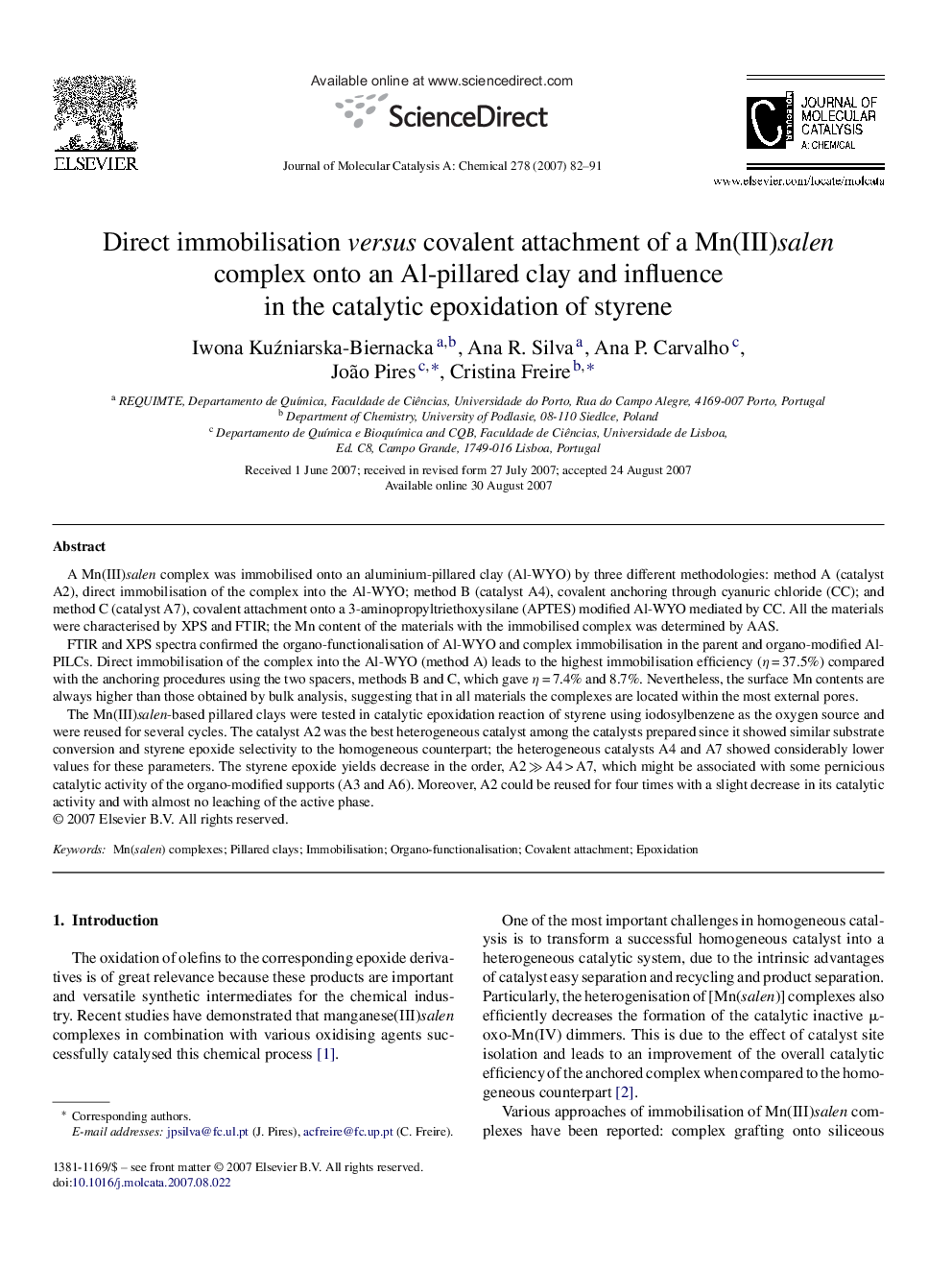| کد مقاله | کد نشریه | سال انتشار | مقاله انگلیسی | نسخه تمام متن |
|---|---|---|---|---|
| 67715 | 48492 | 2007 | 10 صفحه PDF | دانلود رایگان |

A Mn(III)salen complex was immobilised onto an aluminium-pillared clay (Al-WYO) by three different methodologies: method A (catalyst A2), direct immobilisation of the complex into the Al-WYO; method B (catalyst A4), covalent anchoring through cyanuric chloride (CC); and method C (catalyst A7), covalent attachment onto a 3-aminopropyltriethoxysilane (APTES) modified Al-WYO mediated by CC. All the materials were characterised by XPS and FTIR; the Mn content of the materials with the immobilised complex was determined by AAS.FTIR and XPS spectra confirmed the organo-functionalisation of Al-WYO and complex immobilisation in the parent and organo-modified Al-PILCs. Direct immobilisation of the complex into the Al-WYO (method A) leads to the highest immobilisation efficiency (η = 37.5%) compared with the anchoring procedures using the two spacers, methods B and C, which gave η = 7.4% and 8.7%. Nevertheless, the surface Mn contents are always higher than those obtained by bulk analysis, suggesting that in all materials the complexes are located within the most external pores.The Mn(III)salen-based pillared clays were tested in catalytic epoxidation reaction of styrene using iodosylbenzene as the oxygen source and were reused for several cycles. The catalyst A2 was the best heterogeneous catalyst among the catalysts prepared since it showed similar substrate conversion and styrene epoxide selectivity to the homogeneous counterpart; the heterogeneous catalysts A4 and A7 showed considerably lower values for these parameters. The styrene epoxide yields decrease in the order, A2 ≫ A4 > A7, which might be associated with some pernicious catalytic activity of the organo-modified supports (A3 and A6). Moreover, A2 could be reused for four times with a slight decrease in its catalytic activity and with almost no leaching of the active phase.
A Mn(III)salen complex has been directly immobilised and covalently attached onto organo-functionalised pillared clays. The new materials have been characterised and tested in the catalytic epoxidation of styrene with iodosylbenzene as an oxygen source. Figure optionsDownload as PowerPoint slide
Journal: Journal of Molecular Catalysis A: Chemical - Volume 278, Issues 1–2, 14 December 2007, Pages 82–91